Keen to make the most of seasonal produce? We learn about the what and why of traditional food preservation methods with Ethical.net, beginning with the humble larder and root cellar.
The way we eat has a profound effect on how eco-friendly, ethical, and sustainable our lives can be. Choosing and using seasonal produce is key. But this isn’t just about the perfect seasonal recipes – it’s also about preserving the harvest to enjoy later in the year. Choosing sustainable ways to preserve our food is crucial for a greener and more sustainable way of life.
In these articles, we’ll take a look at using traditional food preservation methods for making the most of seasonal produce. Whether we grow our own, or buy ethically from local food producers, these age-old techniques can help us transition to a better future for ourselves, our families, and the planet.
Why eating local, seasonal produce is so important
Firstly, let’s take a moment to look at the importance of eating local, seasonal produce.
At present, the way most of us eat contributes to systems that harm both people and the planet. Our reliance on supermarket produce from around the globe, and the related expectation that we can have any fruits and vegetables whenever we want them, is a big problem.
Choosing local, seasonal produce reduces demand for out-of-season produce, further supports additional local produce, and local farming in your area. This in turn can lead to less transportation (with its associated pollution and greenhouse gas emissions), less refrigeration, fewer hothouses, and less irradiation of produce.
Much of the produce eaten by Europeans originates in the ‘Sea of Plastic‘ – the greenhouses of Almeria, Spain. Around 3.5 million tons of fruits and vegetables are produced there annually, from more than 31,000 hectares (78,000 acres) of greenhouses. When you buy out-of-season fresh produce in the UK, this is often where it will come from. But the repercussions are not only environmental: migrants are exploited here in order for people in the UK and other European countries to eat fresh produce year-round.
Eat seasonally – ideally sourcing food directly from local, organic producers – and you can play a role in halting both the exploitation of people, and the excess consumption of non-renewable resources. For more information on what is in season every month in the UK, check out this link.
Why we should preserve more food at home
Of course, choosing to eat fresh, local, seasonal produce can limit the range of crops available to you throughout the year. But learning to preserve seasonal crops in various eco-friendly ways can ensure a healthy diversity in your diet.

Credit: Jonathan Pielmayer on Unsplash
Preserving local, seasonal produce can ensure you get the vitamins and nutrients you need, without having to turn to heavily-processed foods.
By preserving food at home, you can:
- Ensure a healthy diet year-round, while sticking to local, seasonal ingredients.
- Enjoy foods with greater nutritional value, that often taste better too.
- Save money (by buying fresh wholefoods rather than more expensive processed and packaged goods, or paying a premium for food grown abroad or with large amounts of energy).
- Avoid harmful toxins associated with industrial food preservation.
- Learn new skills to help you boost your resilience and live more sustainably in future.
- Reduce food waste by making the most of all the food you buy or grow.
From personal experience, I would add that using traditional preservation techniques can also be interesting, satisfying, and a lot of fun. Similarly, bottling, or making jams and other preserves can be great ways to slow down and relax, by helping you learn to live in the moment and appreciate the simple pleasures in life.
Traditional food preservation methods
The most widespread way of preserving food at home is through refrigeration or freezing – but this is only as eco-friendly as the energy that’s used. These are only green preservation methods in a household that runs exclusively on renewable sources of power.
If, on the other hand, you rely on fossil fuels (or when freezer space runs out), investigate other, older, more traditional methods. These techniques can also save money, since they require little or no energy.
To keep things simple, let’s focus on the preservation of fruits, vegetables, herbs, and other plant-based foods. Traditional preservation of these kinds of fresh products can go a long way towards helping build a sustainable lifestyle.
Pantry or larder storage
Before refrigeration, food preservation in the UK centred around a space found in almost every home – a pantry, or larder. Older homes often still include these spaces: cool areas where perishable items can be stored at low temperature. But over the 20th Century, this concept of a walk-in pantry was lost, with most modern homes having little or no provision for cool food storage.
Retrofitting old homes for modern sustainability often revolves around insulation and glazing, or the installation of renewable energy generation systems. But arguably just as important is building space for food storage and preservation back in.
My husband and I are currently renovating an old stone barn, to be our forever home. The design includes a walk-in pantry, one of the elements I’m most excited about. An airy, cool space on the north-east corner, off the kitchen, its internal walls are insulated so the space will be unheated, and outside of the building envelope. With stone walls, and a stone floor will keep it cool, I will use it to store most of the food I grow or source locally.
Of course, I appreciate that it’s not always possible to design from scratch, but even in a small flat it’s possible to build pantry-provision back in. Most people keep food in simple kitchen cupboards – but by insulating a cupboard, returning to our ancestors’ techniques, food can be stored for longer, and more effectively.
Other options include storing fresh, seasonal produce in a garage space or unheated spare room.
Root cellars
Some fresh, harvested vegetables can be stored in your home for quite a while. For example, root crops can be stored in boxes of damp sand, pumpkins and squash on shelves in a cool, dark location, and onion and garlic can be braided and hung out of direct light somewhere with plenty of ventilation and a low, steady temperature.
How long fresh produce can be stored in your home depends on the fruits and vegetables in question; some will last much longer than others. As well as providing the right storage conditions, it’s important to use up damaged or sub-par items first, as these will not last as long in storage.
Another option for increasing vegetables’ ‘shelf life’ is a root cellar – another traditional preservation technique. If you have a garden, it may be possible to create a DIY root cellar for longer-term root-crop storage.
Traditionally, the best way of keeping root crops and other vegetables was in a cool underground storage area. The soil around a root cellar will tend to keep produce frost-free in winter, yet cool during the summer months, and humidity can be kept to suitable levels for the safe storage of a number of harvests.
At its simplest, an underground root cellar is a box inserted into the ground. At its most sophisticated, it can be a full walk-in underground room. There are plenty of options to consider.
Part 2 coming soon. Find the original article by Elizabeth Waddington on the Ethical.net blog. Main image by K8 on Unsplash.
 About the author
About the author
Ethical.net is a collaborative platform for discovering and sharing ethical alternatives, whether purchasing from a social enterprise, thrift shopping, or learning how to fix your old phone instead of buying a new one. They aim to make ethical the new normal.

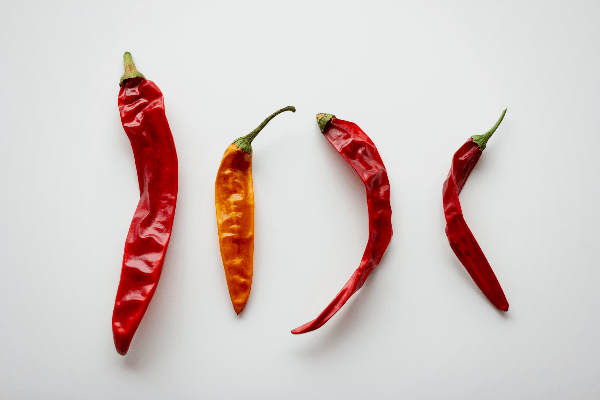


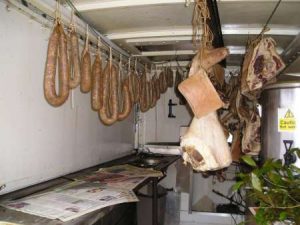
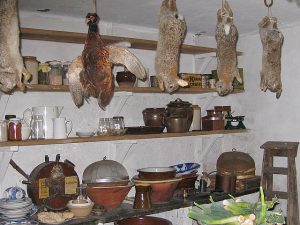
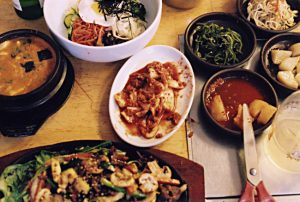
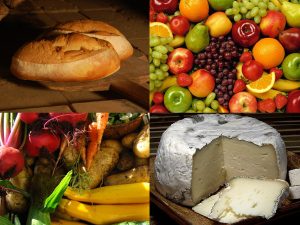
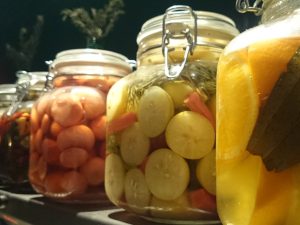
1 Comment
In our modern age of 24/7 food availability we have totally lost track of seasonality and how and when to store/treat food. This has been brought home to me over the last coupe of years with my involvement with heritage wheats.
There is an old kernel of knowledge now disregarded that you should never grind flour before Christmas the year of harvest.
For years we grew conventional wheats which were cut one week and on the supermarket shelves the next as plastic wrapped ‘bread’.
We changed to heritage wheats over the years and never gave it a thought. Come 2019 harvest we cut one variety and tested it and all I can say is it was bland. We left it in the silo and thought we may out it on the back of a lorry with some conventional wheat this year. Come harvest we fortunately tested it again and to my surprise it was fantastic. We have since sold it at a premium.
My point is that when saving/storing things we must look to what our forefathers did and learn from that as they had the knowledge born from experience.